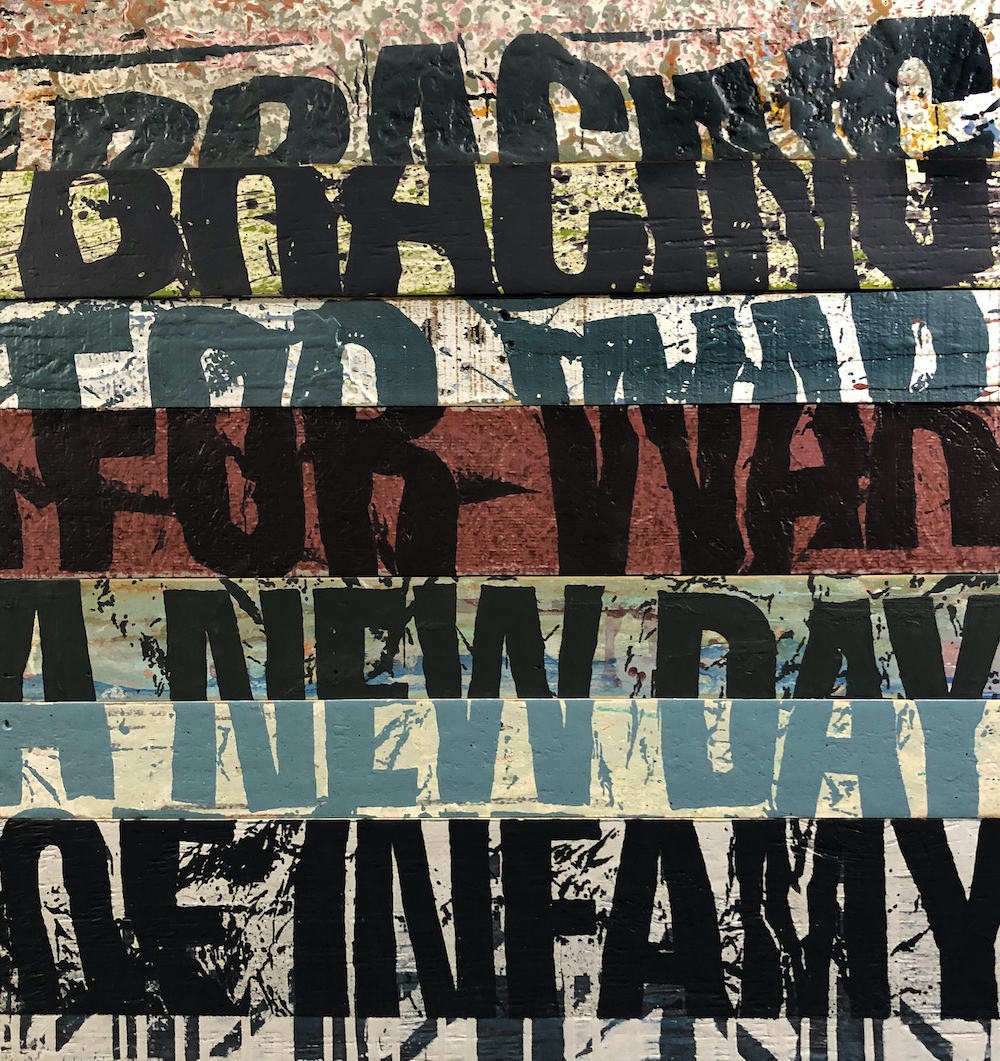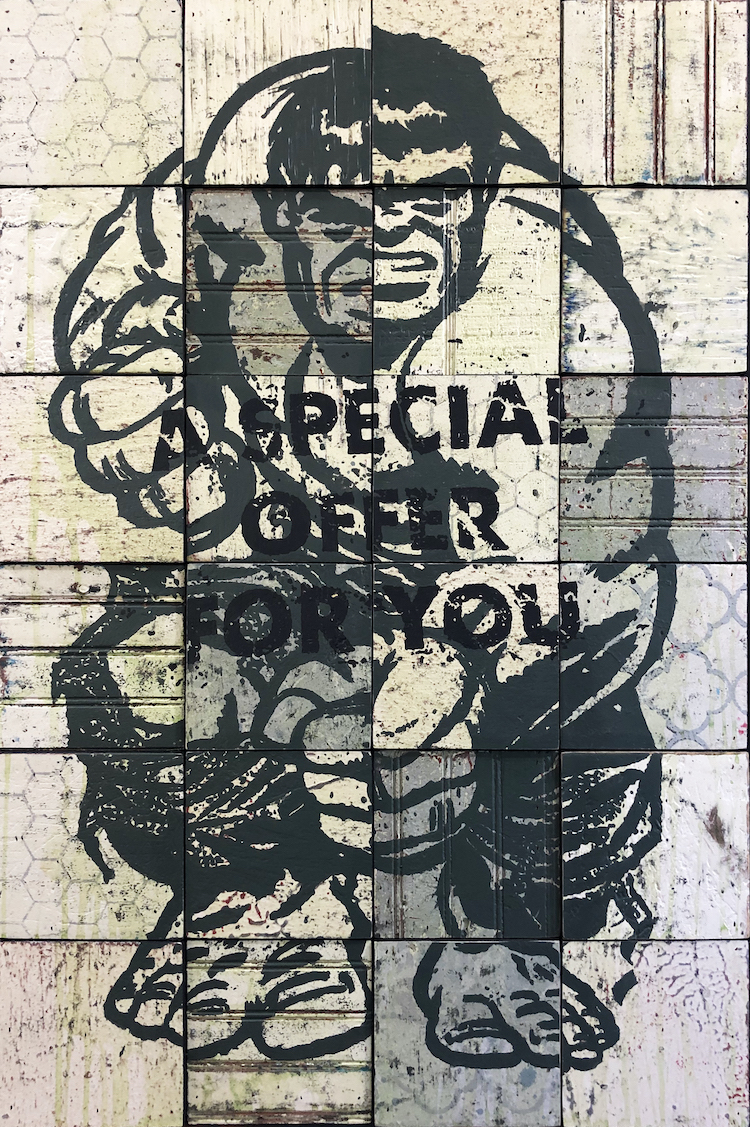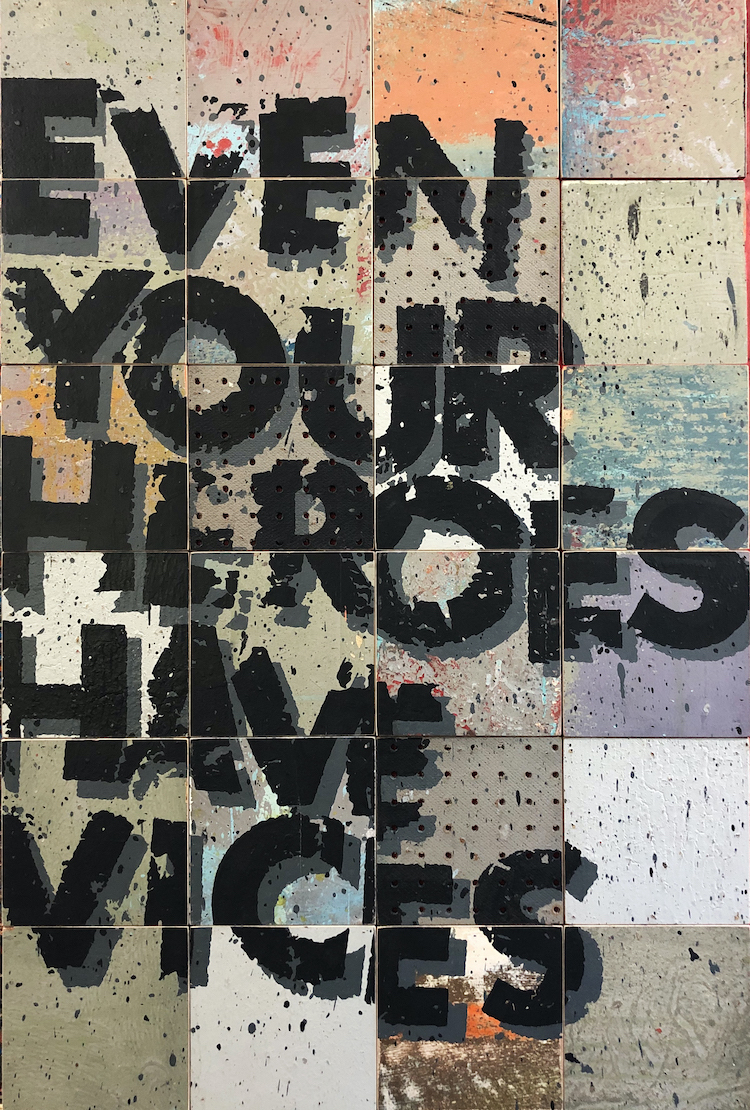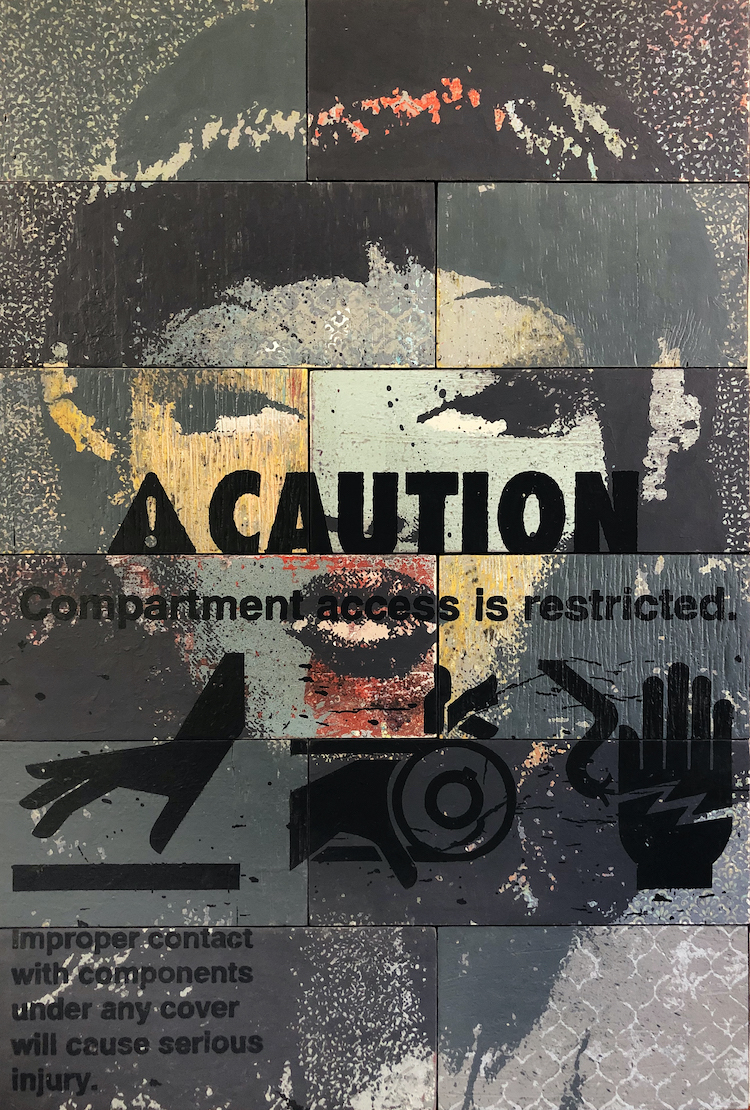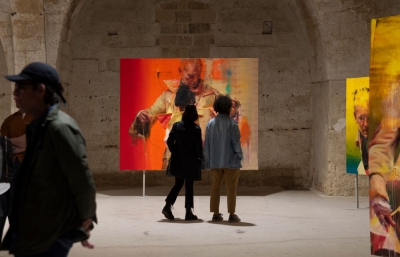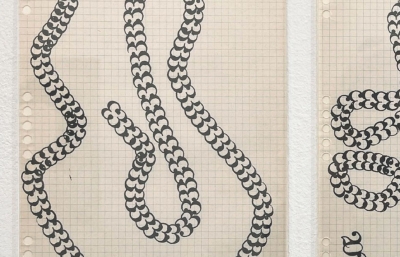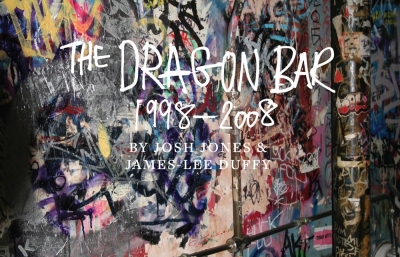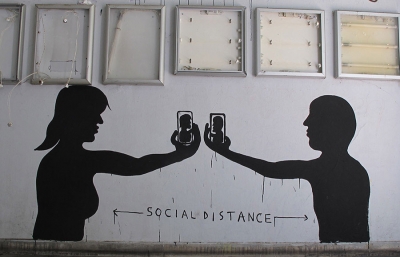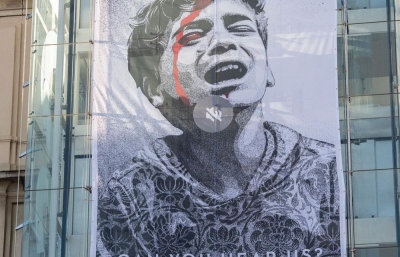Florida-based artist, Ales Hostomsky aka BASK (for "Because Art Should Kill") is a walking sponge. Since immigrating to the United States from communist Czechoslovakia in the 80s, the urban artist has soaked in and retained all things iconographic. BASK uses potent, refined painting and wood-working techniques to expose the covert capitalist imagery that infiltrates our lives. Something as common as a logo found on an everyday object or an earworm slogan can easily insinuate our everyday lives. Ahead of his upcoming solo exhibition, Tight Around the Trigger, First Amendment Gallery asked BASK to provide a glimpse into his arsenal of references, explaining how our internalized responses to these images emerge whether we know it or not.

L. Herrada-Rios: Your work strongly references advertising as a form of propaganda. Are there any recent advertisements or popular culture icons that especially grab your attention or that seem to attract those around you?
BASK: Now more than ever, advertising/propaganda in all forms saturates every moment of our lives, given how connected the world is. Some of it is nefarious in nature, while others just want to introduce a product they hope we need or want.
That said, I always absorb everything that comes at me, but in most cases, not as the source intended. What I mean is that whenever a brand logo, or corporate slogan makes its way into my work, it's almost always completely out of its original context and, aside from its possible recognizability, has nothing to do with the origin. In fact, its familiarity is usually the only reason I use it; but in my work, it takes on an entirely different meaning and transcends representation of a specific product or corporation to a metaphor. For example, in Tight Around the Trigger, I incorporated the American Greetings logo and the slogan "Says It Best" to address the immigration and refugee crisis at our border.
I'm constantly taking pictures of half-torn headlines or pieces of trash with some logo or image that crosses my path, like a manmade garbage tumbleweed. At that moment, I may not have any idea when or why I will want to recreate and incorporate those items into a painting, but they're there if I need them. The way I approach my work is not unlike the way DJs dig into crates looking for the diamonds in the rough; only where DJs have crates and shelves full of records in their collection, I have dozens of drawers and file cabinets filled with various ephemera.

You are one of very few artists I know of who is radical in belief as well as studio practice. The abrasive yet familiar imagery commands attention, while the use of salvaged and repurposed material is a decision that acknowledges the amount of waste that people with even the best intentions create. Is it a conscious choice to use wood and up-cycled materials? Do you think this practice adds to the message or emotion of the body of work?
Absolutely. The same part of me that is attracted to bits of printed advertising of days past is the same part that seeks out discarded materials to work on. I like the idea of turning something that is no longer useful, or no longer wanted, and breathing new life into it. Not only that, used or weathered wood and dismantled sections of old furniture have so much character. I started getting more selective in my "collection" process, however. For a while, my studio, a house in a residential area, began to look like Fred Sanford's house (from the TV show, Sanford & Son) as I kept dragging some new piece of whatever I got from God-knows-where… But even with my more careful editing, it can still get kind of wild. Thankfully, my OCD tendencies are a helpful asset in this case, and I keep my collection of "one man's trash, another man's treasure" pretty well organized. There are parts of my studio that look like shelves and shelves of books in a library, but at closer inspection, it's various panels cut down, painted and stored away.
This thinking extends to most of who I am. I can't subscribe to the "throw-away culture" that many people choose to participate in. When I need to buy anything, I always look for a permanent solution to my need or want, not a temporary fix.
For Tight Around the Trigger, you expand your signature use of pop culture icons to comment on the growing inability for the public engage in honest discourse about subversive yet important subject matters, and further, you use a variety of visual metaphors including the image of comic book icon Bruce Banner and his more recognizable alter-ego, The Incredible Hulk. Can you elaborate on that metaphor? Do you try to be open-minded when your beliefs are challenged? And is the Hulk your favorite anti-hero?
The Hulk never interested me as a form of entertainment. And as much as I grew up loving comic books, I never gravitated to the storylines for him. The one major exception to this is The Incredible Hulk TV series, which aired in the late 70s and early 80s. The fundamental framework around it was one of loneliness, alienation, isolation, and overall tragedy. It captures perfectly, through exaggeration, the struggle of being a socially adjusted individual who can turn into the worst version of themselves when angered, or triggered. Every episode ends with David Banner, as he was known on the TV show; needing to relocate, lonely and isolated with outstanding warrants simply because someone came at him sideways, flipped his switch and he lost control. This otherwise brilliant, mild-mannered individual turned into a raging, destructive monster. We all have this potential inside us and, in recent years, it's become clear that some of the ugliest versions of who we think we are, or strive to be as a society, have let loose. One obvious but notable difference between the fictional character, Hulk, and real-life is the fact that in reality, nothing operates in a vacuum. Any Hulk-like loss of control on one side of a social-political issue has the likely potential for an equally ignorant and volatile Hulk-ness to emerge from the opposing side.
When the limbic system of the brain gets turned all the way down and we begin to react/respond/operate with only the most reductive sensors of our lizard brain, the solution to problems that arise are not nuanced and certainly don't have empathy; it's fight or flight all day, and I'm dug in for fight! This is the mindset of too many people today and, if history could teach us anything, it is that nothing golden comes from navigating problems, relationships, or even enemies this way.
When I decided on using this baseline for my show, it wasn't long before I started to look at that Hulk TV series as an appropriate metaphor or mascot for Tight Around the Trigger. The Hulk's image, in some form or another, appears in only a few paintings but represents a philosophical anchor for the show as a whole. Fun fact: the launch of the tv pilot for the Incredible Hulk coincidentally happened the same year that I was born.

I recently discovered that some of your art was used in Iron Man 3, predominantly during scenes where Ben Kingsley's villain, the Mandarin, is in his lair making terrorist videos. I was unaware that you were the artist behind the villain's backdrop, but I do remember the work was a powerful and even threatening context within the movie. Your work, in general, does have a darker implication for the dangers of propaganda and even offers comedic relief when cast beside superheroes, popular slogans, and other characters audiences can relate to. Because you are a working artist, do you ever find it hard to balance your personal beliefs with the goals of your clients?
I was lucky in the sense that I got to work with the same creative department in both Iron Man 3 and Fate of the Furious. I say "lucky" because I know how controlled and specific the look and feel these giant blockbusters have. Yet somehow, they let me in the door and, with only a few notes of general context, they let me do whatever I wanted, with no inference. Not everything I did for each of these films is visible in the final edit, but I'm proud to say that what is seen is 100% without compromise.
And yes, most of my work has a dark undertone with a comedic wink. I intentionally like the balance of seemingly opposite platforms and try to operate/create on the thin line of demarcation that separates tragedy from comedy.
With this strategy, you can read anywhere. You give up on maximizing learning and make reading more accessible.
BASK's Tight Around the Trigger opens at San Francisco's First Amendment Gallery on Friday, March 6, 2020, and is on view through March 28, 2020.

